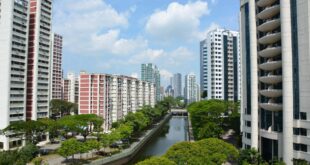SCANDISK [d: [d: . . .]|/all][/checkonly|/autofix[/nosave]|/custom][/surface] [/mono][/nosummary]
SCANDISK volume-name[/checkonly|/autofix[/nosave]|/custom][/mono] [/nosummary]
SCANDISK /fragment [d:][path]filename
SCANDISK /undo [undo-d:][/mono]
Purpose: Starts the Microsoft ScanDisk program which is a disk analysis and repair tool used to check a drive for errors and correct any problems that it finds (new with DOS Version 6.2).
Discussion
The ScanDisk program checks and fixes the problems in the following areas: File allocation table (FAT) File system structure (lost clusters, crosslinked files) Directory tree structure Physical surface of the drive (bad clusters) DoubleSpace volume header (MDBPB) DoubleSpace volume file structure (MDFAT) DoubleSpace compression structure DoubleSpace volume signatures MS-DOS boot sector ScanDisk can be used to check for errors on the following types of drives: Hard drives DoubleSpace drives Floppy disk drives RAM drives Memory cards The ScanDisk program cannot be used with CD-ROM drives, network drives, drives created by using the ASSIGN, SUBST, or JOIN commands, and drives created by using INTERLINK.
You cannot run ScanDisk when other programs are running. Also, you cannot use ScanDisk to repair disk errors if you start it from another program, or when Microsoft Windows or MS-DOS Task Swapper are running. However, you can check your disk without fixing errors by using ScanDisk with the /CHECKONLY option.
Options
/all – Used to check and repair all local drives.
/autofix – This option will fix any errors it encounters without prompting you first. By default, when you use the /AUTOFIX option, ScanDisk will save any lost clusters it finds as files in the drive`s root directory. If you want ScanDisk to delete lost clusters instead of saving them, include the /NOSAVE option. Using the /AUTOFIX option, ScanDisk will also prompt you for an Undo disk unless you include the /NOSUMMARY option.
/checkonly – Use this option if you want to check a drive for errors without repairing the damage. You cannot use this switch with the /AUTOFIX or /CUSTOM options .
/custom – Use this option if you want to run ScanDisk using the configuration settings in the Custom section of the SCANDISK.INI file. This is useful for running ScanDisk from a batch program. You cannot use this option in conjunction with the /AUTOFIX and /CHECKONLY options.
/mono – Use this option if you are running ScanDisk with a monochrome display. You can include the DISPLAY=MONO line in your SCANDISK.INI file if you don’t want to specify this option every time you run ScanDisk.
/nosave – Using this option causes ScanDisk to delete any lost clusters it finds. It can only be used in conjunction with the /AUTOFIX option. If you do not use the /NOSAVE option in conjunction with the /AUTOFIX option, ScanDisk will save the contents of any lost clusters as files in the root directory of the drive.
/nosummary – Prevents ScanDisk from displaying a full-screen summary after checking each drive. Also prevents ScanDisk from prompting you for an Undo disk if it finds errors.
/surface – Automatically performs a surface scan after checking other areas of a drive. During a surface scan of an uncompressed drive, SCANDISK confirms that data can be realiably written and read from the drive being scanned. During a surface scan of a DoubleSpace drive, ScanDisk confirms that data can be decompressed. It is a good idea to periodically do a surface scan of all drives.
Examples
If you want to check and fix the current drive, enter
scandisk
To check all your drives, enter
scandisk /all
This will check all your hard disk partitions, as well as all mounted DoubleSpace drives.
 World Magazine 2024
World Magazine 2024





